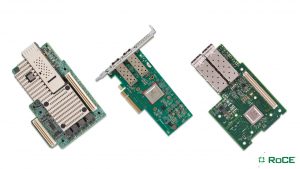 Remote direct memory access (RDMA) is a well-known technology at the heart of the world’s fastest supercomputers and largest data centers. RDMA first became widely adopted in the High Performance Computing (HPC) industry with InfiniBand, but is now being leveraged by cloud, storage and enterprise Ethernet networks with RDMA over Converged Ethernet (RoCE).
Remote direct memory access (RDMA) is a well-known technology at the heart of the world’s fastest supercomputers and largest data centers. RDMA first became widely adopted in the High Performance Computing (HPC) industry with InfiniBand, but is now being leveraged by cloud, storage and enterprise Ethernet networks with RDMA over Converged Ethernet (RoCE).
While RoCE technology is in high demand among enterprise networking and storage professionals running Ethernet systems, misinformation about the interconnect technology still remains. IBTA Marketing Working Group Co-Chair Bill Lee and I set out to tackle the 11 most common myths surrounding RoCE, including the following:
- RoCE requires a lossless network (it doesn’t)
- RoCE doesn’t scale (it does)
- RoCE isn’t routable (it is)
- RoCE only works over short distances (it works across all Ethernet networks)
- Common traffic-management and –monitoring tools don’t work with RoCE (they do)
- RoCE is not an open standard (it is)
- RoCE can’t handle advanced Ethernet signaling rates (it can)
- All RDMA over Ethernet technologies offer the same efficiency and latency benefits (they don’t)
- RoCE lacks support from multiple vendors (it has support)
- RoCE interoperability between different vendors is unreliable (it isn’t)
- RoCE is difficult and expensive to deploy (it isn’t)
Read the full article on Electronic Design to see how we dispel these myths, or download a PDF of the article via the RoCE Initiative Resources page.
